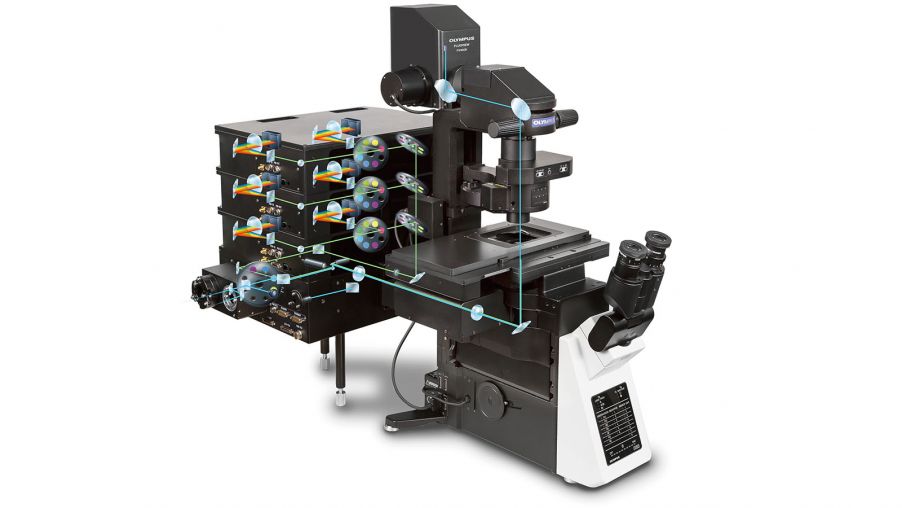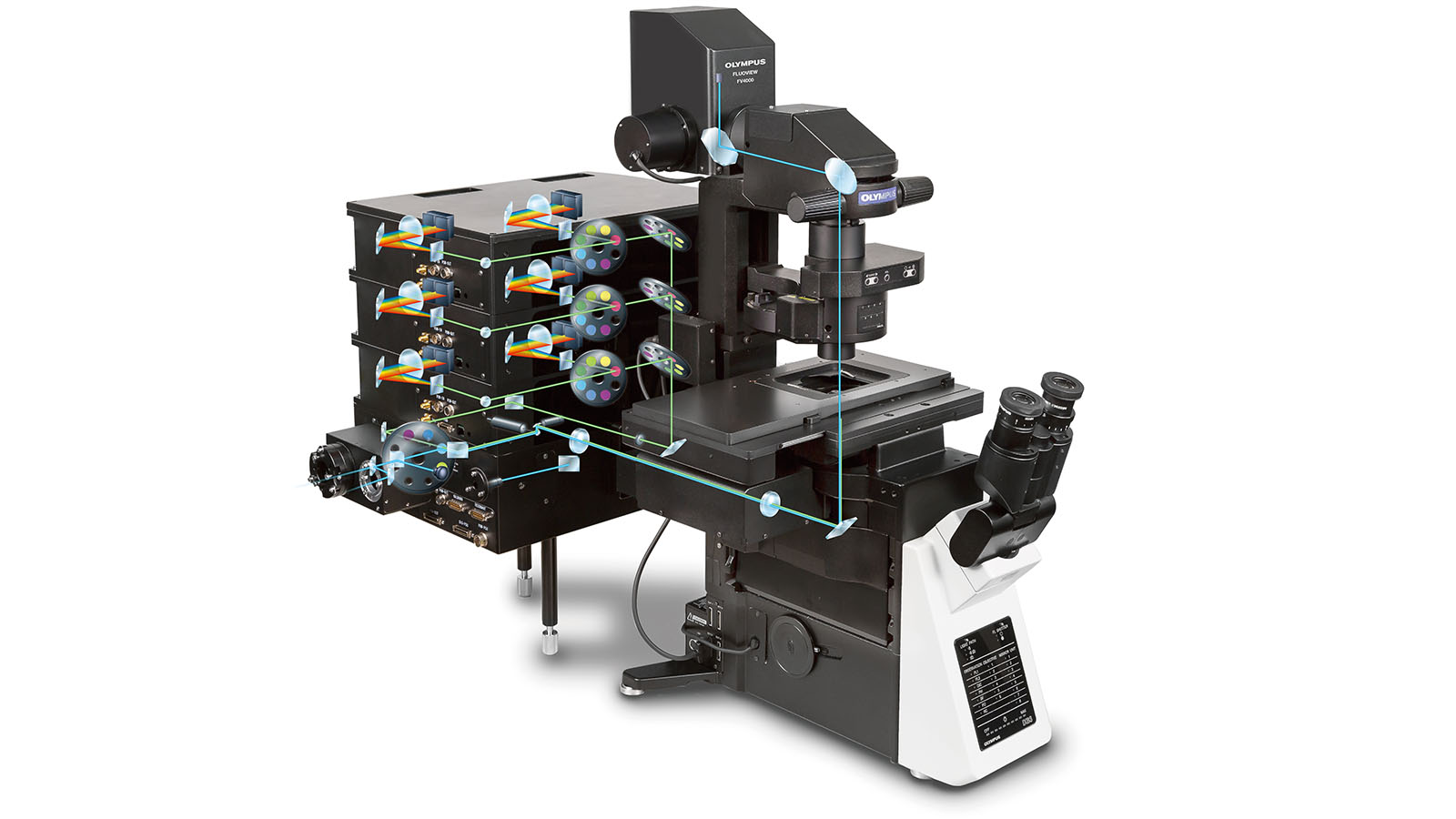Q: Is the FV3000 still available?
A: No, the FV3000 was discontinued in March 2024.
Q: How is the FV4000 better than the FV3000?
A: The FV4000 is superior to the FV3000 in two broad categories.
1. Superior Imaging Performance
- Higher Signal-to-Noise Images: The system uses our new SilVIR™ detector technology, and it enables you to capture ultra-low-noise, high sensitivity images to see ultra-fine features with unparalleled clarity.
- Better Image Resolution: The FV4000 provides enhanced resolution compared to the FV3000,allowing you to see finer details and achieve clearer images with a resonant scanner.
- Improved Speed: With faster scanning speeds than the FV3000, the FV4000 boosts your productivity by reducing imaging times.
- Intensity Dynamic Range with Linearity: The SilVIR detector has a wide dynamic range, from a single photon to thousands, which enables you to clearly see dim and bright areas of your sample together in one image.
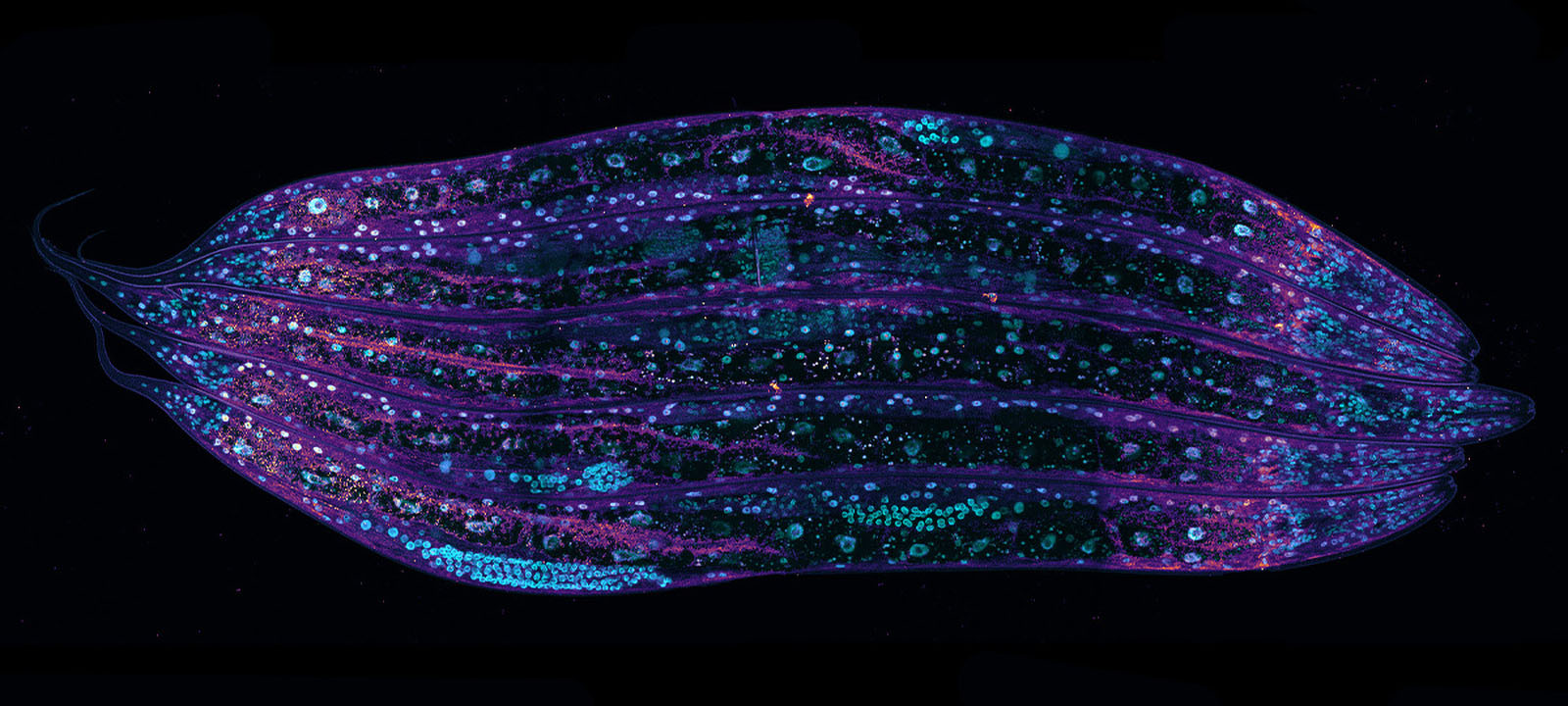
Caenorhabditis elegans, nuclear structures marked with EGFP (cyan LUT) and cytoplasmic structures marked with mRuby (purple LUT).
Sample Courtesy of: Dr. Jeremy Vicencio, Stroustrup Lab and Dr. Nadia Halidi, Advanced Light Microscopy Unit, Centre for Genomic Regulation, Barcelona, Spain
2. Cutting-Edge Technology
- Advanced Components: Equipped with the latest lasers and detectors, the FV4000 surpasses the technological capabilities of the FV3000, ensuring top-notch performance.
- Future-Ready Platform: The FV4000 microscope’s modular design allows for easy upgrades and additions, so your microscope can evolve with advancing technology.
And like the FV3000, we back up each FV4000 purchase with comprehensive support and training so that you can get the most out of your system.
Q: How does the SilVIR detector differ from others on the market?
A: The SilVIR detector combines a silicon photomultiplier (SiPIM) and our patented fast signal processing technology. The result is a higher dynamic range, lower noise, no sensitivity degradation over time, and very little variation between detectors, so each FV4000 will provide very similar results.
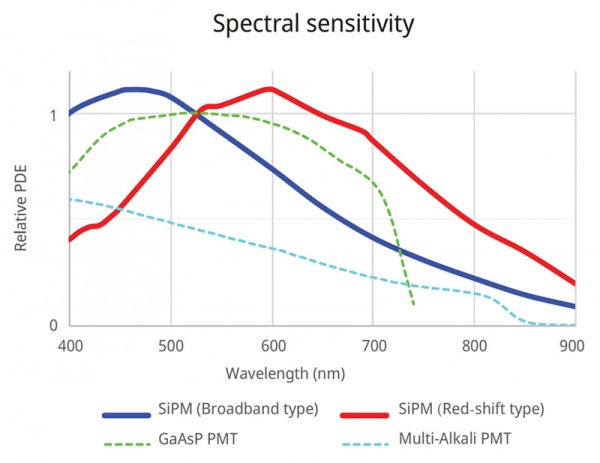
Q: Is the FV4000 capable of super resolution?
A: Yes, you can achieve a 120-nanometer optical resolution using our Olympus Super Resolution (OSR) technology without any optional hardware.
Q: When you say that the FV4000 provides quantitative image data, what does this mean?
A: The FV4000 is capable of photon counting, providing—for the first time—quantitative information about the strength of fluorescence imaging in wide dynamic range. With the SilVIR detector, the system can count the number of photons per pixel.
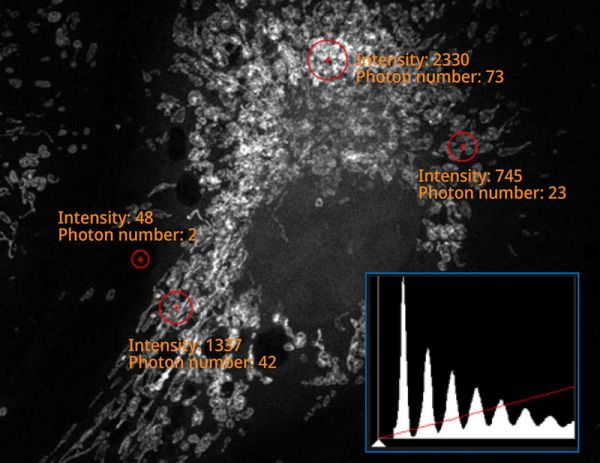
Q: Can I upgrade the microscope after I purchase it or am I locked into a single configuration?
A: Upgrading is simple since the FV4000 is a modular system. You can add, for example, additional lasers and detectors based on your needs. You can even upgrade to MPE simply by purchasing a module.
Q: Does the FV4000 support third-party products?
A: Yes, the system supports a variety of third-party products, such as incubators, XY motorized stages, and piezo Z-drives. For more information about compatibility, please contact your local Evident representative.
Q: Confocal microscopes always seem complicated. Is the FV4000 easier to use?
A: Yes, it is easier to use than a conventional confocal microscope. First, we’ve eliminated most of the complicated adjustments normally required when using a confocal microscope. For the FV4000, just define your illumination power and go. The system also has a laser power monitor, which makes it easy to consistently use the same laser power during your experiments as well as save and recall imaging conditions. With one click, you can recall previously used image settings to capture reproductible data. The system also has a very large dynamic range, making it very forgiving for beginners as it’s less prone to image saturation.
Q: Is the FV4000 available as an upright system as well as inverted?
A: Yes, you can choose the standard inverted system or upright systems designed for documentation or electrophysiology. We also offer a gantry frame that enables precise movement and positioning of the microscope’s optics over a large area.
Explore the future of microscopy with the FV4000 and elevate your research capabilities. For more information, detailed specifications, and to schedule a demonstration, please visit the FV4000 product page or contact our sales team directly.
*In 2022, Olympus transferred its Scientific Solutions Division into a stand-alone company called Evident.
Related Content
Behind the Scenes: Developing the FLUOVIEW FV4000 Confocal Microscope
Webinar (Recorded): Meet the FLUOVIEW FV4000 Confocal Microscope
